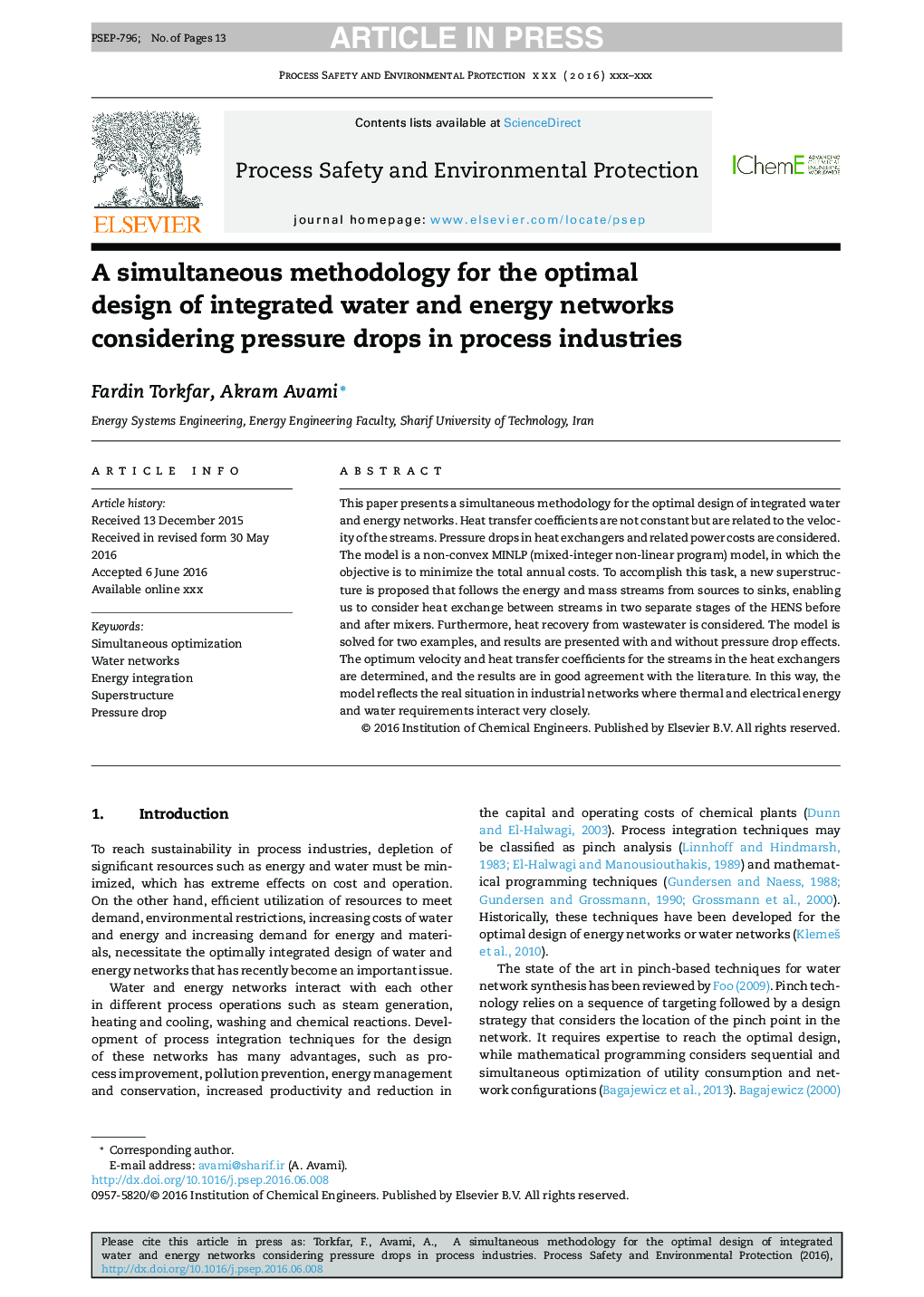| Article ID | Journal | Published Year | Pages | File Type |
|---|---|---|---|---|
| 4980782 | Process Safety and Environmental Protection | 2016 | 13 Pages |
Abstract
This paper presents a simultaneous methodology for the optimal design of integrated water and energy networks. Heat transfer coefficients are not constant but are related to the velocity of the streams. Pressure drops in heat exchangers and related power costs are considered. The model is a non-convex MINLP (mixed-integer non-linear program) model, in which the objective is to minimize the total annual costs. To accomplish this task, a new superstructure is proposed that follows the energy and mass streams from sources to sinks, enabling us to consider heat exchange between streams in two separate stages of the HENS before and after mixers. Furthermore, heat recovery from wastewater is considered. The model is solved for two examples, and results are presented with and without pressure drop effects. The optimum velocity and heat transfer coefficients for the streams in the heat exchangers are determined, and the results are in good agreement with the literature. In this way, the model reflects the real situation in industrial networks where thermal and electrical energy and water requirements interact very closely.
Related Topics
Physical Sciences and Engineering
Chemical Engineering
Chemical Health and Safety
Authors
Fardin Torkfar, Akram Avami,
